Archer AXE300 Review: TP-Link’s Best Wi-Fi 6E Router

The Archer AXE16000 Quad-Band 16-Stream Wi-Fi 6E Router (model Archer AXE300) decidedly puts TP-Link on the list of prominent Wi-Fi 6E vendors. But that’s the least exciting thing about this new Wi-Fi machine.
Among other things, the Archer AXE300 is the first Quad-band Wi-Fi router with three Multi-Gig ports and SFP+ support, which its main competitor, the Asus GT-AXE16000, doesn’t have. Most importantly, the new router proved to be a formidable performer in my hands-on testing.
Here’s the bottom line: If you’re looking for a well-performing standalone router ready to host a Multi-Gig network right out of the box (which you can expand via a switch) at the current price of $600, the Archer AXE300 is an excellent buy. Go for it!
Dong’s note: I first published this piece on October 11, 2022, as a preview and updated it on October 25 to an in-depth review after thorough hands-on testing.
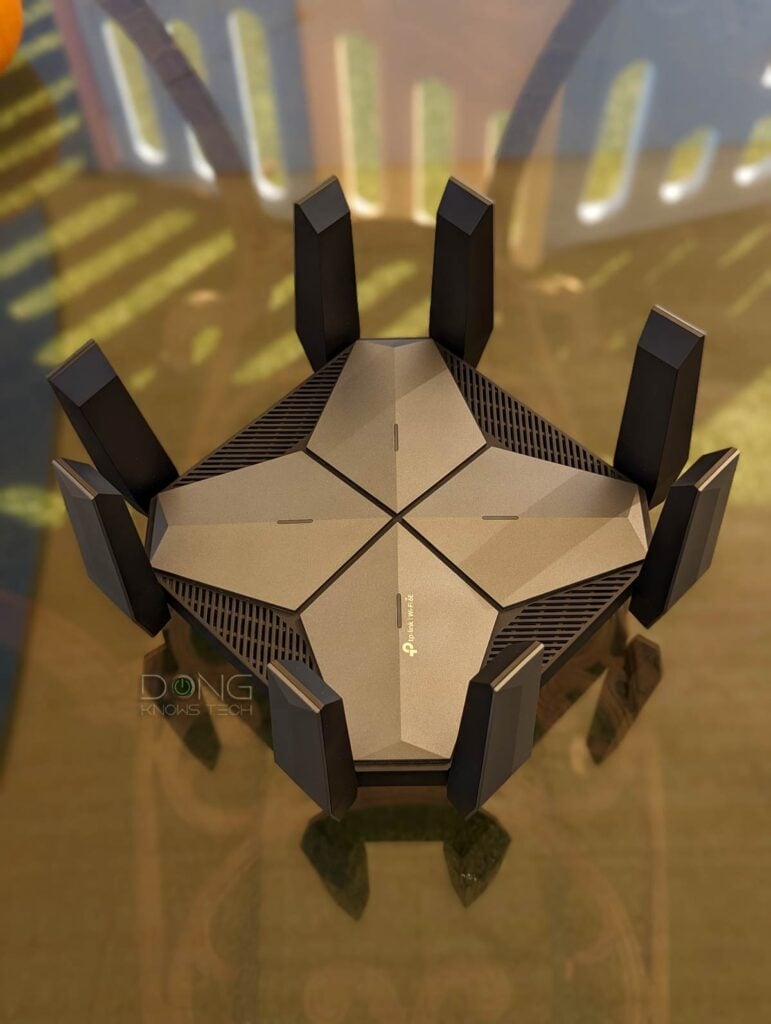
TP-Link Archer AXE300: A non-compromising home router
The TP-Link Archer AXE300 is a large square box with eight non-removable antennas mounted at its four corners. These are large antennas making the whole package relatively bulky.
It’s pretty hard to figure out which side is the router’s “front”, but you can call the side that houses the network port its “back” and go from there.
What’s important, on the inside, the Archer AXE300practically has everything you’d want in a standalone router. (The word is put in italic intentionally, as you’ll find out why.)
This third Quad-band piece of hardware — after the Netgear Orbi RBRK960 and the Asus GT-AXE16000 — has mighty processing power, three flexible Multi-Gig ports, and top-their Wi-Fi specs with a combined bandwidth of 16000Mbps.
It can also have a robust local web user interface and a great set of features and network settings. But, like all things, it’s still not perfect.
Let’s check the hardware specs.
Archer AXE300: Hardware specifications
| Model | Archer AXE300 |
| Dimensions | 9.1 × 9.1 × 2.7 in (232 × 232 × 68 mm) |
| Weight | 3.75lbs (1.7kg) |
| Processing Power | 2.0 GHz Quad-Core CPU, 1GB RAM, 256MB Flash |
| Wi-Fi Bandwidth | Quad-band AXE16000 |
| 1st Band (channel width) |
4×4 2.4GHz AX: Up to 1148Mbps (20/40MHz) |
| 2nd Band (channel width) |
4×4 5GHz-1 AX: Up to 4804Mbps (20/40/80/160MHz) |
| 3rd Band (channel width) |
4×4 5GHz-2 AX: Up to 4804Mbps (20/40/80/160MHz) |
| 4th Band (channel width) |
4×4 6GHz AXE: Up to 4804Mbps (20/40/80/160MHz) |
| Backward Compatibility | 802.11a/b/g/n/ac Wi-Fi |
| Wireless Security | WPA / WPA2 / WPA3 |
| Web User Interface | Yes |
| Mobile App | TP-Link Tether (optional) |
| Operating Roles | Router (default) or Access Point |
| Mesh-Ready | Yes (OneMesh) |
| USB Port | 1x USB 3.0 |
| Gigabit Port | 4x LAN |
| Multi-Gig Port | 1x 2.5Gbps Multi-Gig LAN/LAN 1x 10Gbps Multi-Gig LAN/WAN 1× 10 Gbps Multi-Gig/SFP+ Combo WAN/LAN |
| Link Aggregation | LAN only (LAN2 + LAN3) LACP or Static |
| Dual-WAN Support | No |
| Power Intake | 100-240V |
| Power Consumption (per 24 hours) |
≈ 465 Wh (as tested) |
| Release Date | October 2022 |
| U.S MSRP | $599.99 |
Flexible Multi-Gig ports with a hint of SFP+
Like the case of the Asus GT-AXE1600, the TP-Link AXE300 comes with three Multi-Gig ports, including two 10GbE ports and one 2.5GbE port. You can use any of them as the WAN port, and the rest will work as LANs.
What sets the new router apart is its first 10Gbps port, which is also its default WAN port. It’s a 10Gbps BaseT/SFP+ combo port, meaning you can use it as a Multi-Gig port or an SFP+ at a time. (If you’re unfamiliar with SFP+ open the drawer below for more.)
Ethernet: BaseT vs SFP+
BaseT (RJ45) and SFP(+) in brieft
The BASE-T (or BaseT) port type refers to the wiring method used inside a network cable and the connectors at its ends, which is 8-position 8-contact (8P8C). This type is known via a misnomer called Registered Jack 45 or RJ45. So we’ll keep calling it RJ45.
But there’s also SFP or SFP+ (plus) port type, used mostly for enterprise applications. SFP stands for small form pluggable and is the technical name for what is often referred to as Fiber Channel or Fiber.
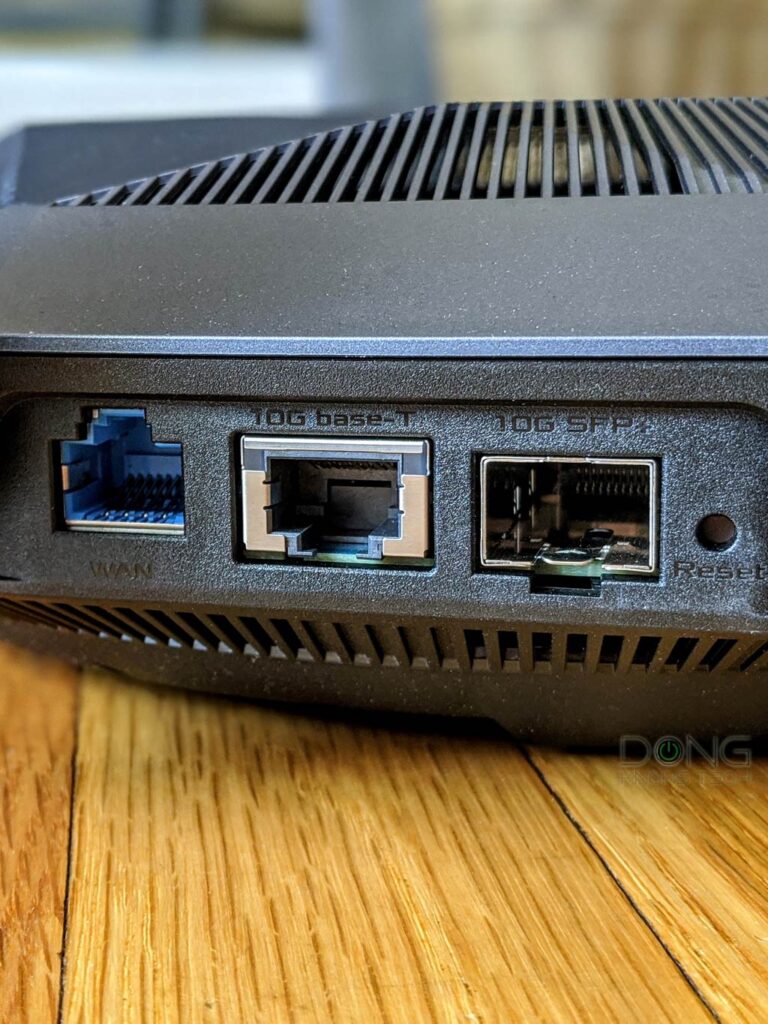
An SFP+ port has speed grades of either 1Gbps or 10Gbps. The older version, SFP, can only do 1Gbps, though it shares the same port type as SFP+. This type of port standard is more strict in compatibility and more reliable in performance. And that’s all you need to know about SFP/+.
While physically different, Base-T and SFP/+ are both parts of the Ethernet family. They share the same networking principles and, at the same speed grades, you can call them the same, such as Gigabit Ethernet (1Gbps) or 10 Gigabit Ethernet (a.k.a 10GE, 10GbE, or 10 GigE). For this reason, using the Ethernet naming convention can be confusing.
Generally, you can get an adapter to use a BaseT device with an SFP or SFP+ port. Still, in this case, compatibility can be an issue — a particular adapter might only work (well) with the SFP/+ port of certain hardware vendors.
BASE-T is more popular thanks to its flexibility in speed support and backward compatibility. Faster-than-Gigabit Base-T is often called Multi-Gig, which includes 2.5GBASE-T (2.5Gbps) and 5GBASE-T (5Gbps).
This flexibility means the AXE300 can host an SFP+ Fiber-optic ONT, an SFP+ device, such as a NAS server, or a standard RJ45 device of the same roles.
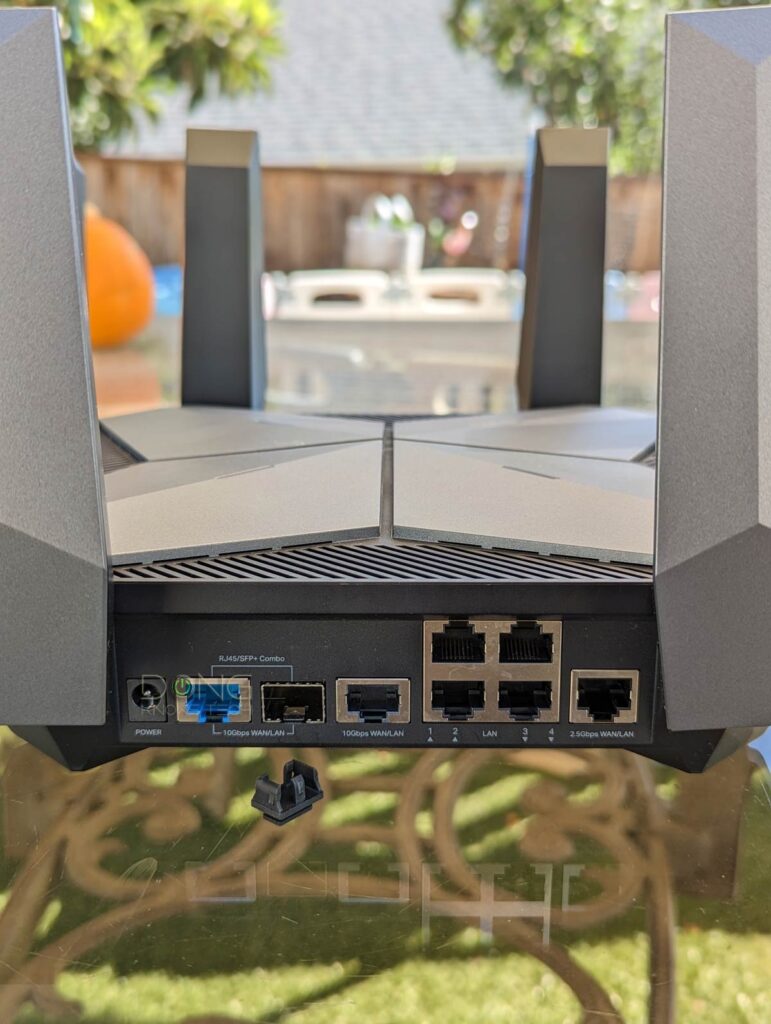
So with the Archer AXE300, you can host two Multi-Gig devices right out of the box while hosting super-fast broadband simultaneously. For best performance, though, I’d recommend getting a Multi-Gig switch — the Zyxel XS1930-12HP or TP-Link’s own TL-SX1008 will come in handy.
Home router and 10Gbps grade
To deliver (close to) true 10Gbps, a router needs more than just a couple of 10Gbps Ethernet network ports. Among other things, it also needs high processing power (and good firmware) to handle this type of traffic.
So far, most home routers, including top-tier ones, do not meet all the requirements for true 10Gbps (10,000Mbps) throughputs. Consequently, after “overhead,” they sustain at 6,000Mbps, give or take, on a good day. (A similar thing can be said about most 10Gbps switches though they tend to have better-sustained rates than routers.)
That’s partially why more home Wi-Fi routers support the lowest tier of Multi-Gig, which is with 2.5Gbps, than those with 10Gbps ports. In this case, you can expect them to deliver close to 2,500Mbps in real-world speeds.
And that also proved to be the case with the TP-Lik AXE300, as you’ll note in the performance section below.
Besides the Multi-Gig ports, the Archer AXE300 also has four Gigabit ports, of which you can combine the LAN2 and LAN3 ports to form a 2Gbps Link Aggregation connection.
Unforatuenly, the router doesn’t feature Dual-WAN, which will come in handy for those with two Internet plans. Furthermore, you can’t turn a Gigabit LAN port into the WAN role to free up all Multi-Gig ports to work as LANs. But that’s just another example of how we can’t get everything.
TP-Link Archer AXE300: Detail photos






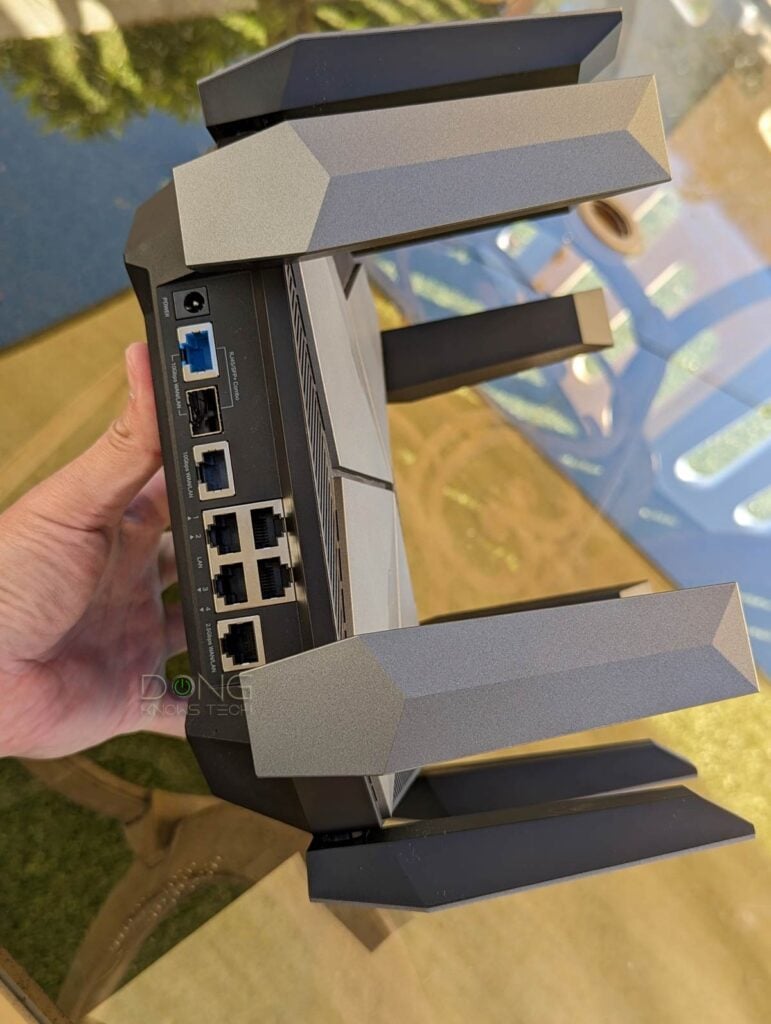
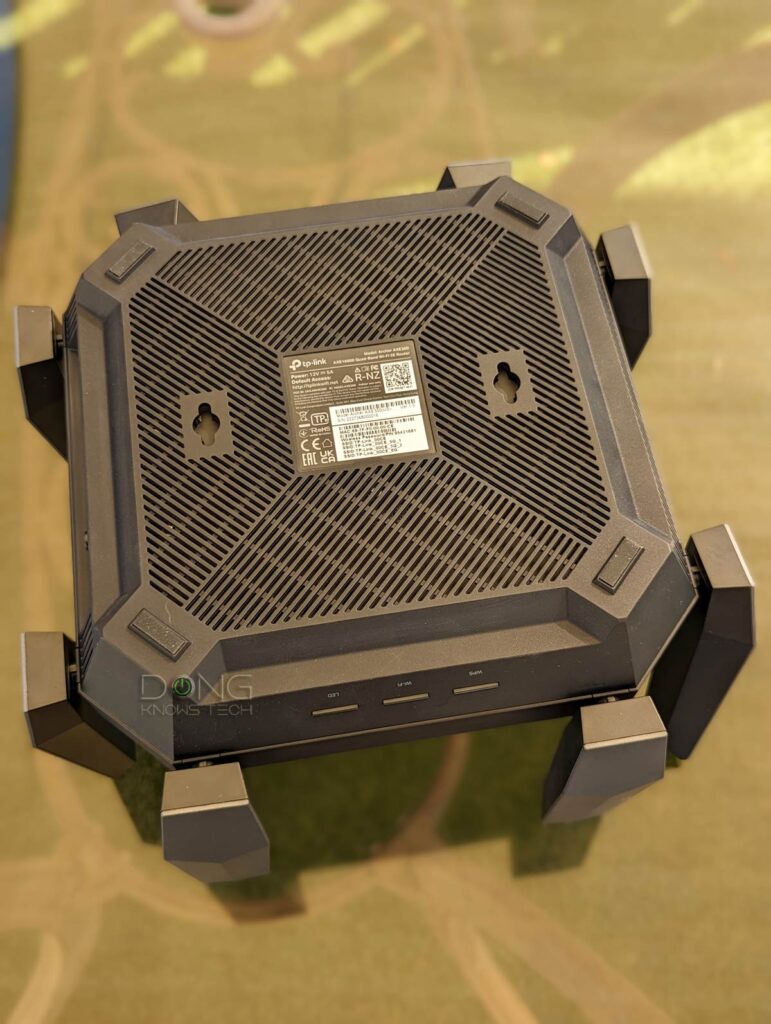
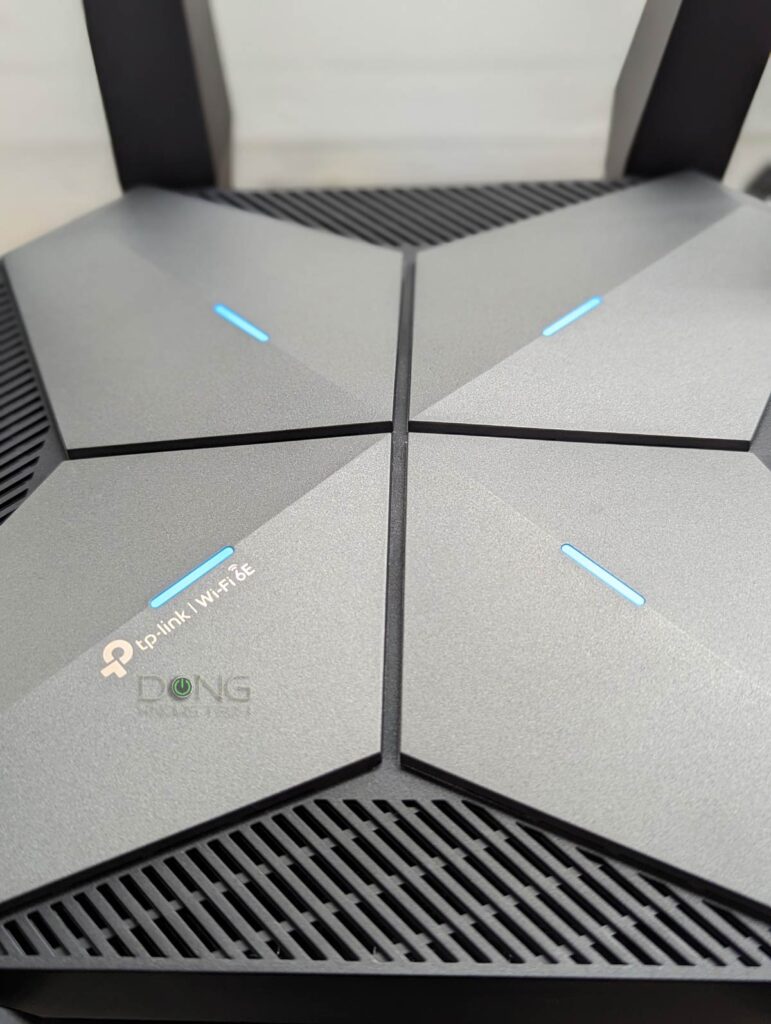
A familiar TP-Link Archer experience
Despite the new and exciting hardware specs, the Archer AXE300 felt familiar in my experience. It shared the same firmware, interface, and mobile app (optional) as other Archer routers I’ve tested.
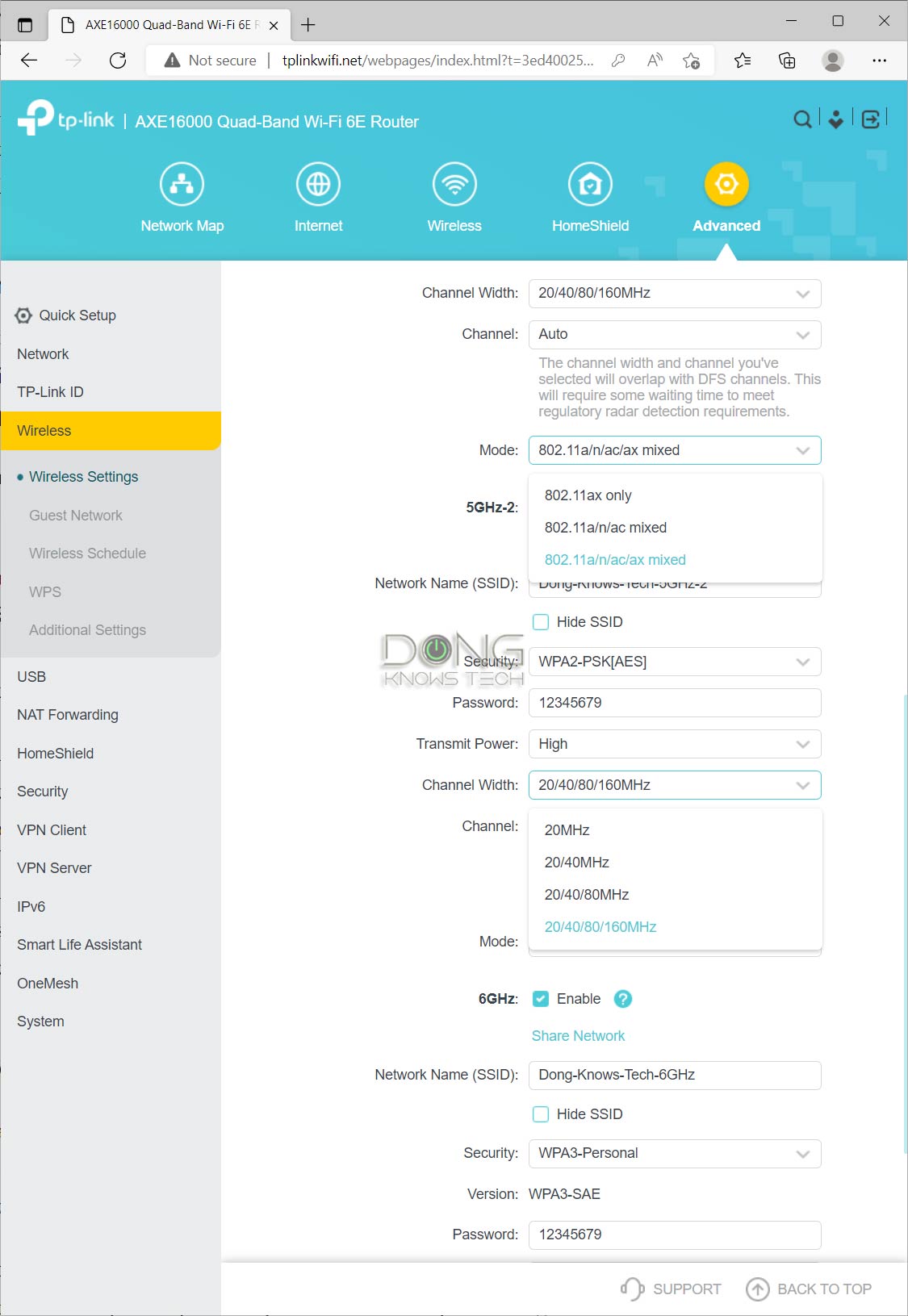

And thanks to the local interface, if you’ve worked with a standard home router before, you’ll be able to handle this new machine with no issue.
Specifically, to set up the router, all you have to do is connect a computer to its default Wi-Fi (printed on the underside) or a LAN port. After that, navigate a browser to its default IP (192.168.0.1) or tplinkwifi.net; the rest is self-explanatory.
As mentioned above, the router’s first 10GbE port is the default WAN, but you can change that role to the other 10GbE or 2.5GbE port during the setup process or at any time. Now the remaining Multi-Gig port will work as LANs.
In my testing, the switch took just a minute to apply, and the router didn’t even need to restart.
Standard settings and mobile app
the Archer AXE300 has all the goodies in terms of network customizability. There are many options, including the support for Dynamic DNS (with a free TP-Link-based server included, though you’d need a TP-Link login account), port forwarding, VPN (all server types and client options), and a lot more.
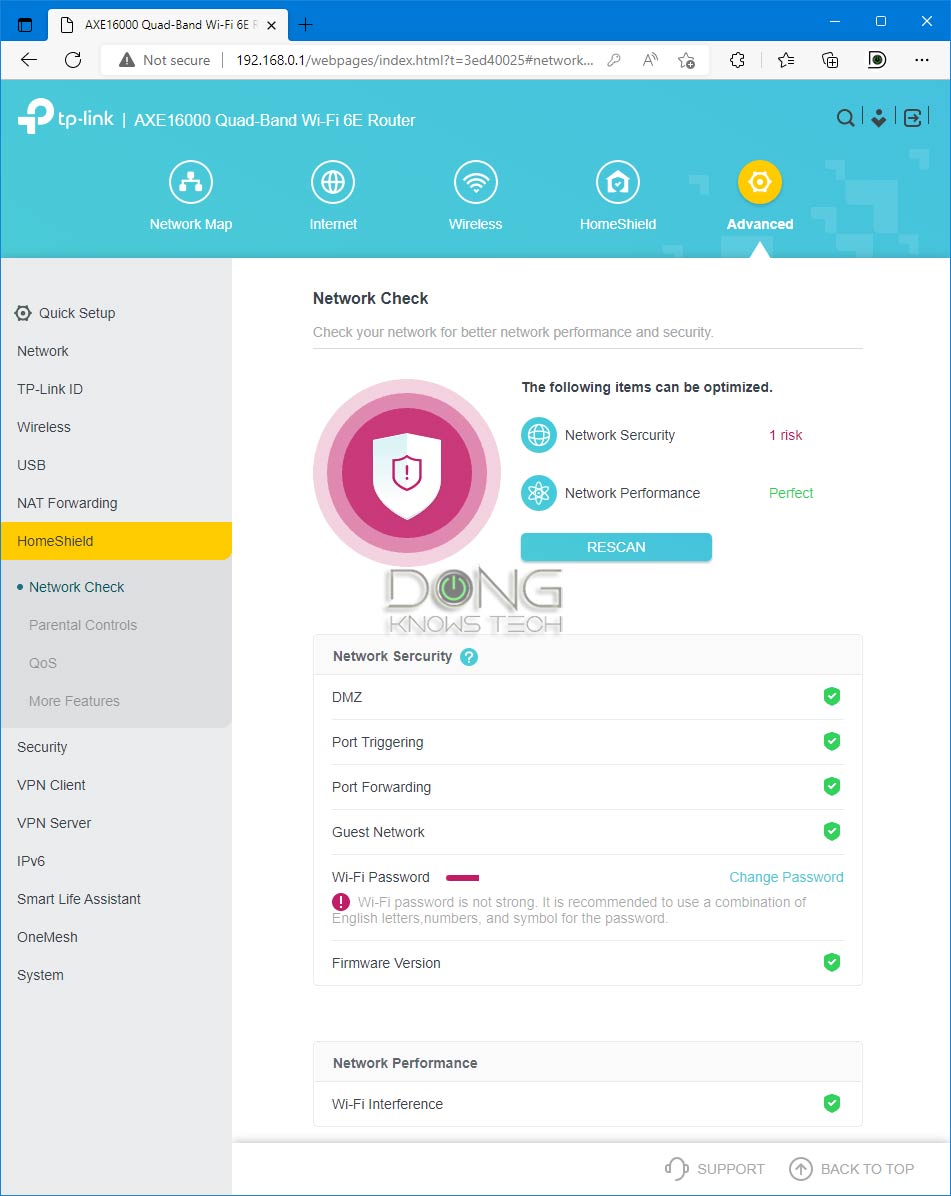
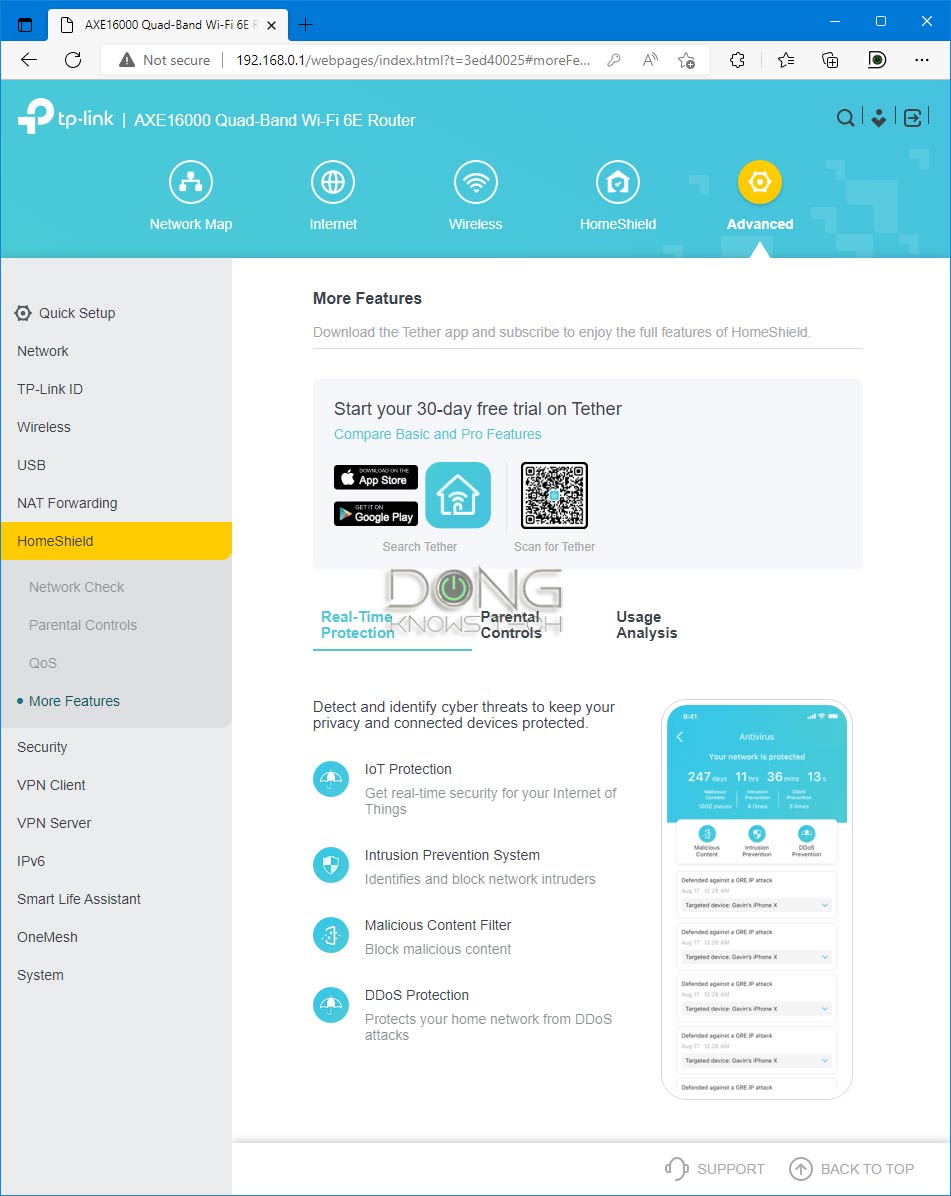
As for features, the router includes QoS, Parental Controls, and some flavor of online protection.
However, if you want more comprehensive protection, you’ll need to opt for HomeShield Pro and use a TP-Link login account. That’s the same deal for all Archer (and Deco) hardware.
TP-Link and your privacy
It’s important to note that having to sign in with an account means your hardware always connects to the vendor. In TP-Link’s case, you’ll manage your home network entirely or partially through the company.
And that translates into inherent privacy risks. Here’s TP-Link’s Privacy Policy — make sure you are comfortable with what it collects from your network.
TP-Link is headquartered in China, where the practice of online privacy, surveillance, and security might differ from the rest of the world.
Privacy is a matter of degree. While managing your network via a third party is never a good idea, data collection varies vendor by vendor.
A standalone router at heart
As mentioned above, considering its hardware specs and Multi-Gig ports, the Archer AXE300 is meant to be a standalone router.
Yes, the router supported TP-Link’s OneMesh, where you can add an extender to it to scale up the Wi-Fi coverage. And that worked well in my trial with the RE715X.
Unfortunately, the extender itself, despite being the “high-end” among OneMesh-ready extenders, has middling Wi-Fi specs. Consequently, clients connected to the mesh satellite had just a portion of the speed they could get when connected directly to the router.
Generally, when it comes to Multi-Gig speed grades, you need to get your home wired, and for now, there’s no mesh option for the AXE300 that won’t reduce its performance significantly.
So it’s best to consider this router if you only need a standalone broadcaster or intend to use access points to scale up the coverage.
But chances are you’ll do just fine with the Archer AXE300 alone.
TP-Link Archer AXE300: Exellent performance
I tested the Archer AXE300 for almost a week and was generally happy with it. As a standalone router, it delivered a similar experience as the Asus GT-AXE1600 but at a lower cost.
For one, it proved reliable, passing our intense stress test with no issue.
And it had an excellent collective range. It’s hard to quantify this, but if you live in a home of around 2000 ft2 (186 m2), give or take, this router will e able to deliver strong signals to every corner.
In terms of throughput speeds, the router was overall excellent but not with some usual caveats.
Fast but far from “true” 10Gbps
I tested the router’s Multi-Gig ports the way I do switches, and the router was fast but sustained well below 10Gbps, just like the case of others with similar port grades.
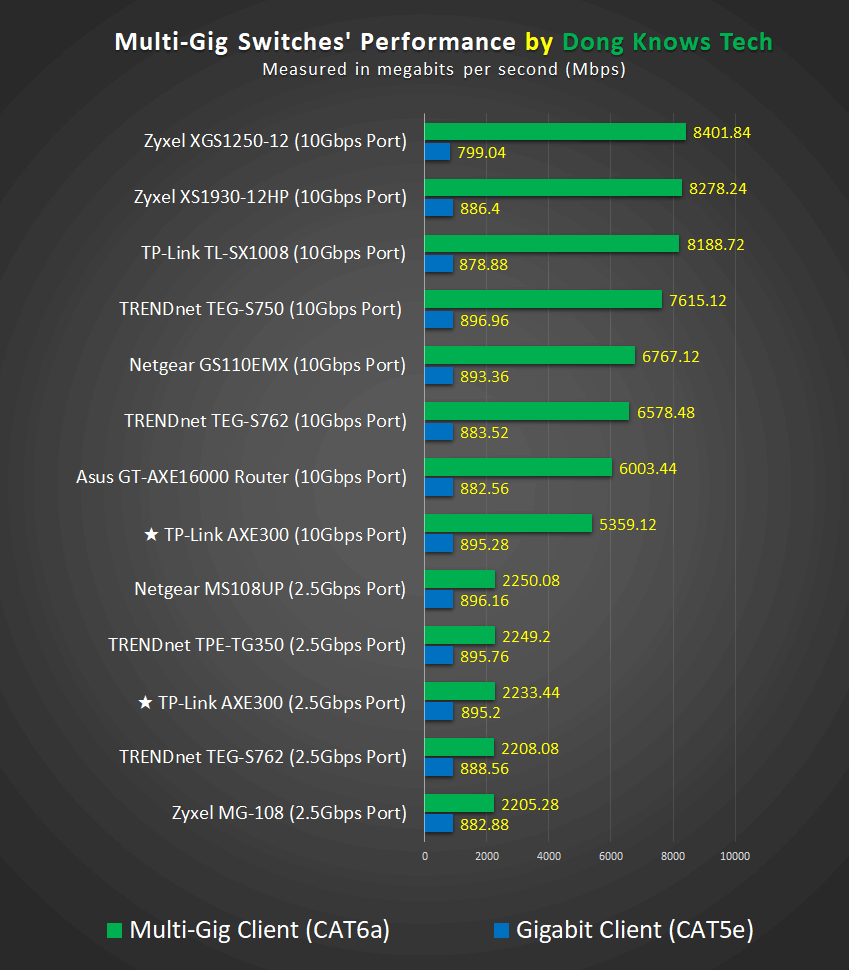
Specifically, when used as LAN ports hosting two 10GbE-enabled clients, the router’s two 10Gbps ports sustained at just above 5Gbps.
And when hosting a 10Gbps Fiber-optic, either of its 10GbE ports could deliver close to 6Gbps of bandwidth.
Fast Wi-Fi performance
The Archer AXE300 was consistently excellent. It’s easily one of the fastest routers I’ve tested.
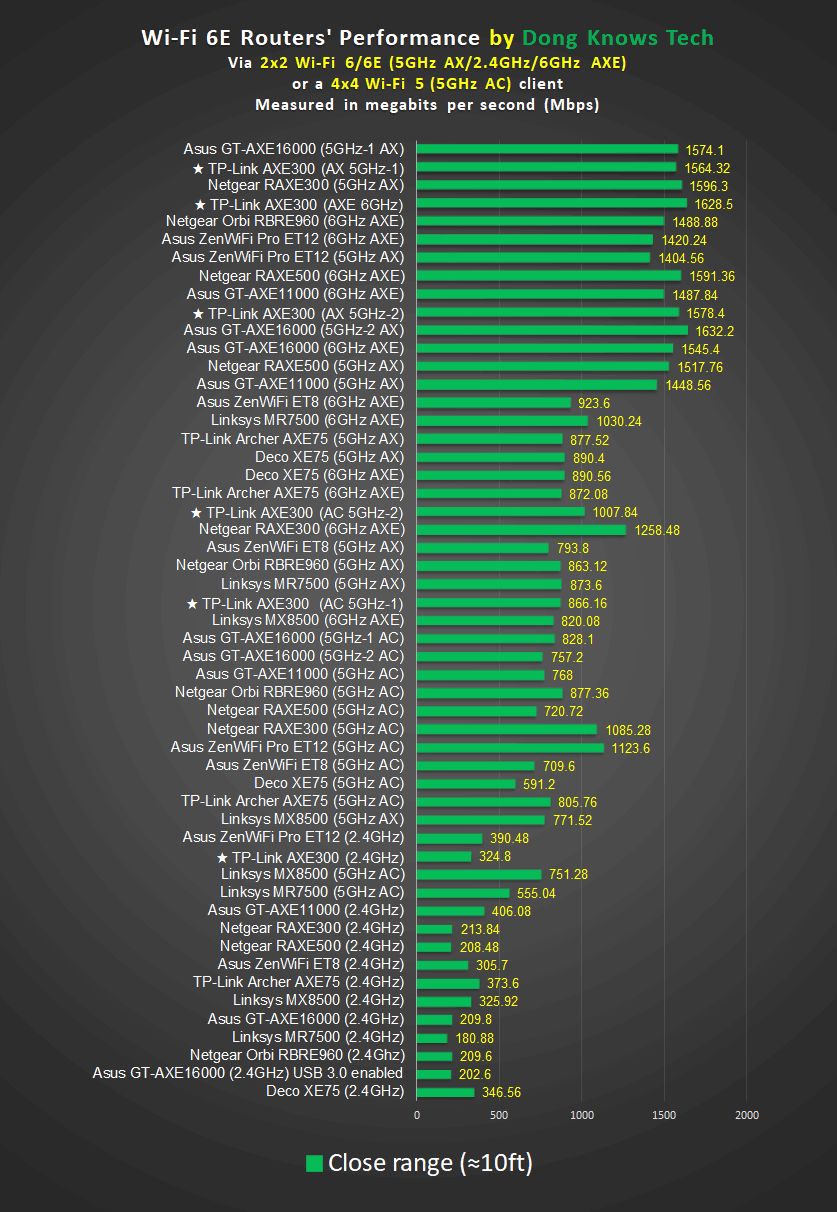

It’s also worth noting that the router’s gaps between the close range and long range were narrow, showing that it had strong signals.
USB port’s NAS performance could be better
And finally, when hosting a portable drive, Archer AXE300 did well, though not as well as I’d hoped.
I used a few super-fast portable SSDs with USB ports, and the performance didn’t match the Multi-Gig connections, be it the 2.4Gbps or 10Gbps port, as you’ll note in the charts below.


But the router wasn’t slow, sustaining over 120MB/s for writing and over 200MB/s for reading. At these rates, it could handle most everyday network storage needs with no issues.
Like all TP-Link Archer routers, apart from data sharing and media streaming, the AXE300 can work as a Time Capsule alternative which can be a bonus for Mac users.
Overall, the Archer AXE300’s performance is similar to the Asus GT-AXE1600, which is excellent. The two have similar performances — the differences are within the margins of errors.
If you want to see them stacked against each other directly, check back later among the other matchup posts.
Pros
Top-tier hardware with excellent performance; three flexible Multi-Gig ports and LAN Link Aggregation support
Robust web user interface; lots of network and Wi-Fi settings and a handful of valuable features for home users
Comparatively cheaper than competitors
USB-C ready, wall-mountable; useful optional mobile app; OneMesh-ready
Cons
No option for Gigabit WAN, Dual-WAN, or fast mesh with wired backhauling
HomeShield Pro requires subscription, mobile app, and login account
Bulky design, the USB port’s performance could be better
Conclusion
The TP-Link Archer AXE300 is an excellent Wi-Fi 6E router worthy of its $600 price tag.
If you live in a relatively large, airy home with super-fast Internet and want a top-notch network, get this new Wi-Fi Machine today.




